Great Books of the World
Top 100 Favorites
These are the top 100 favorite public domain books, as rated by readers.
100 titles sorted by popularity
-
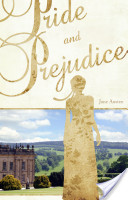 Pride and Prejudice
Jane Austen
Pride and Prejudice
Jane Austen
Pride and Prejudice is a novel by Jane Austen, first published in 1813. The story follows the main character Elizabeth Bennet as she deals with issues of manners, upbringing, morality, education, and marriage in the society of the landed gentry of early 19th-century England. Elizabeth is the second of five daughters of a country gentleman living near the fictional town of Meryton in Hertfordshire, near London.
-
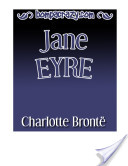 Jane Eyre
Charlotte Brontë
Jane Eyre
Charlotte Brontë
Jane Eyre is a novel by English writer Charlotte Brontë. It was published on 16 October 1847 by Smith, Elder & Co. of London, England, under the pen name "Currer Bell." The first American edition was released the following year by Harper & Brothers of New York.
-
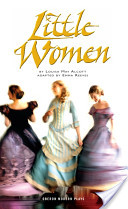 Little Women
Louisa May Alcott
Little Women
Louisa May Alcott
Little Women is a novel by American author Louisa May Alcott written between 1868 and 1869 in Concord, Massachusetts and Boston, at the request of Alcott's publisher. The novel follows the lives of four sisters – Meg, Jo, Beth, and Amy March – detailing their passage from childhood to womanhood, and is loosely based on the author and her three sisters. The first volume, Little Women, was an immediate commercial and critical success, prompting the composition of the book's second volume, entitled Good Wives, which was also successful. Both books were first published as a single volume entitled Little Women in 1880. Alcott followed Little Women with two sequels, also featuring the March sisters: Little Men and Jo's Boys . Little Women was a fiction novel for girls that veered from the normal writings for children, especially girls, at the time. The novel has three major themes:” domesticity, work, and true love. All of them are interdependent and each is necessary to the achievement of a heroine’s individual identity.”
-
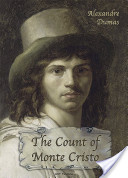 The Count of Monte Cristo
Alexandre Dumas
The Count of Monte Cristo
Alexandre Dumas
The Count of Monte Cristo is an adventure novel by French author Alexandre Dumas . Completed in 1844, it is one of the author's most popular works, along with The Three Musketeers and is considered as one of the best novels ever written. Like many of his novels, it is expanded from plot outlines suggested by his collaborating ghostwriter Auguste Maquet.
-
 Sense and Sensibility
Jane Austen
Sense and Sensibility
Jane Austen
Sense and Sensibility is a novel by Jane Austen, and was her first published work when it appeared in 1811 under the pseudonym "A Lady". A work of romantic fiction, better known as a comedy of manners, Sense and Sensibility is set in southwest England between 1792 and 1797, and portrays the life and loves of the Dashwood sisters, Elinor and Marianne. The novel follows the young ladies to their new home, a meagre cottage on a distant relative's property, where they experience love, romance and heartbreak. The philosophical resolution of the novel is ambiguous: the reader must decide whether sense and sensibility have truly merged.
-
 The Secret Garden
Frances Hodgson Burnett
The Secret Garden
Frances Hodgson Burnett
The Secret Garden is a novel by Frances Hodgson Burnett. It was initially published in serial format starting in the autumn of 1910, and was first published in its entirety in 1911. It is now one of Burnett's most popular novels, and is considered to be a classic of English children's literature. Several stage and film adaptations have been produced.
-
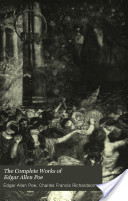 The Works of Edgar Allan Poe
Edgar Allan Poe
The Works of Edgar Allan Poe
Edgar Allan Poe
The works of American author Edgar Allan Poe include many poems, short stories, and one novel. His fiction spans multiple genres, including horror fiction, adventure, science fiction, and detective fiction, a genre he is credited with inventing. These works are generally considered part of the Dark romanticism movement, a literary reaction to Transcendentalism.
-
 Les Mis�rables
Victor Hugo
Les Mis�rables
Victor Hugo
The classic novel--and hit Broadway show--about escaped convict Jean Valjean has been adapted with easy-to-read text, large type, and short chapters. This engaging adaptation of the timeless tale is ideal for reluctant readers and kids not yet ready to tackle the original. From the Trade Paperback edition.
-
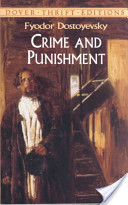 Crime and Punishment
Fyodor Dostoyevsky
Crime and Punishment
Fyodor Dostoyevsky
Crime and Punishment is a novel by the Russian author Fyodor Dostoyevsky. It was first published in the literary journal The Russian Messenger in twelve monthly installments during 1866. It was later published in a single volume. It is the second of Dostoyevsky's full-length novels following his return from ten years of exile in Siberia. Crime and Punishment is the first great novel of his "mature" period of writing.
-
 Persuasion
Jane Austen
Persuasion
Jane Austen
Persuasion is Jane Austen's last completed novel. She began it soon after she had finished Emma, completing it in August 1816. She died, aged 41, in 1817; Persuasion was published in December that year .
-
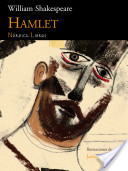 Hamlet
William Shakespeare
Hamlet
William Shakespeare
The Tragedy of Hamlet, Prince of Denmark is a tragedy by William Shakespeare. Set in the Kingdom of Denmark, the play dramatizes the revenge Prince Hamlet exacts on his uncle Claudius for murdering King Hamlet, Claudius's brother and Prince Hamlet's father, and then succeeding to the throne and taking as his wife Gertrude, the old king's widow and Prince Hamlet's mother. The play vividly portrays both true and feigned madness—from overwhelming grief to seething rage—and explores themes of treachery, revenge, incest, and moral corruption.
-
 The Picture of Dorian Gray
Oscar Wilde
The Picture of Dorian Gray
Oscar Wilde
The Picture of Dorian Gray is the only published novel by Oscar Wilde, appearing as the lead story in Lippincott's Monthly Magazine on 20 June 1890, printed as the July 1890 issue of this magazine. The magazine's editors feared the story was indecent as submitted, so they censored roughly 500 words, without Wilde's knowledge, before publication. But even with that, the story was still greeted with outrage by British reviewers, some of whom suggested that Wilde should be prosecuted on moral grounds, leading Wilde to defend the novel aggressively in letters to the British press. Wilde later revised the story for book publication, making substantial alterations, deleting controversial passages, adding new chapters and including an aphoristic Preface which has since become famous in its own right. The amended version was published by Ward, Lock and Company in April 1891. Some scholars believe that Wilde would today have wanted us to read the version he originally submitted to Lippincott's.
-
 Alice's Adventures in Wonderland
Lewis Carroll
Alice's Adventures in Wonderland
Lewis Carroll
Alice's Adventures in Wonderland is an 1865 novel written by English author Charles Lutwidge Dodgson under the pseudonym Lewis Carroll. It tells of a girl named Alice who falls down a rabbit hole into a fantasy world populated by peculiar, anthropomorphic creatures. The tale plays with logic, giving the story lasting popularity with adults as well as with children. It is considered to be one of the best examples of the literary nonsense genre. Its narrative course and structure, characters and imagery have been enormously influential in both popular culture and literature, especially in the fantasy genre.
-
 Romeo and Juliet
William Shakespeare
Romeo and Juliet
William Shakespeare
Romeo and Juliet is a tragedy written early in the career of William Shakespeare about two young star-crossed lovers whose deaths ultimately reconcile their feuding families. It was among Shakespeare's most popular plays during his lifetime and, along with Hamlet, is one of his most frequently performed plays. Today, the title characters are regarded as archetypal young lovers.
-
 Adventures of Huckleberry Finn
Mark Twain
Adventures of Huckleberry Finn
Mark Twain
Adventures of Huckleberry Finn is a novel by Mark Twain, first published in England in December 1884 and in the United States in February 1885. Commonly named among the Great American Novels, the work is among the first in major American literature to be written throughout in vernacular English, characterized by local color regionalism. It is told in the first person by Huckleberry "Huck" Finn, a friend of Tom Sawyer and narrator of two other Twain novels . It is a direct sequel to The Adventures of Tom Sawyer.
-
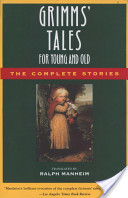 Grimm's Fairy Tales
Jacob Grimm
Grimm's Fairy Tales
Jacob Grimm
Children's and Household Tales is a collection of German fairy tales first published in 1812 by the Grimm brothers, Jacob and Wilhelm. The collection is commonly known in the Anglosphere as Grimm's Fairy Tales .
-
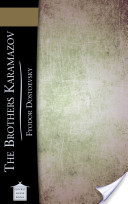 The Brothers Karamazov
Fyodor Dostoyevsky
The Brothers Karamazov
Fyodor Dostoyevsky
The Brothers Karamazov , pronounced ) is the final novel by the Russian author Fyodor Dostoyevsky. Dostoyevsky spent nearly two years writing The Brothers Karamazov, which was published as a serial in The Russian Messenger and completed in November 1880. Dostoyevsky intended it to be the first part in an epic story titled The Life of a Great Sinner, but he died less than four months after its publication.
-
 Dracula
Bram Stoker
Dracula
Bram Stoker
Dracula is an 1897 Gothic horror novel by Irish author Bram Stoker. Famous for introducing the character of the vampire Count Dracula, the novel tells the story of Dracula's attempt to move from Transylvania to England, and the battle between Dracula and a small group of men and women led by Professor Abraham Van Helsing.
-
 Emma
Jane Austen
Emma
Jane Austen
Emma, by Jane Austen, is a novel about youthful hubris and the perils of misconstrued romance. The novel was first published in December 1815. As in her other novels, Austen explores the concerns and difficulties of genteel women living in Georgian-Regency England; she also creates a lively comedy of manners among her characters.
-
 A Little Princess; being the whole story of Sara Crewe now told for the first time
Frances Hodgson Burnett
A Little Princess; being the whole story of Sara Crewe now told for the first time
Frances Hodgson Burnett
A Little Princess is a 1905 children's novel by Frances Hodgson Burnett. It is a revised and expanded version of Burnett's 1888 serialised novel entitled Sara Crewe: or, What Happened at Miss Minchin's Boarding School, which was published in St. Nicholas Magazine. According to Burnett, she had been composing a play based on the story when she found out a lot of characters she had missed. The publisher asked her to publish a new, revised story of the novella, producing the novel.
-
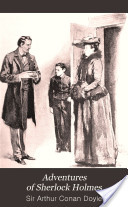 The Adventures of Sherlock Holmes
Arthur Conan Doyle
The Adventures of Sherlock Holmes
Arthur Conan Doyle
The Adventures of Sherlock Holmes is a collection of twelve stories by Arthur Conan Doyle, featuring his famous detective and illustrated by Sidney Paget.
-
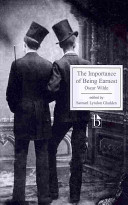 The Importance of Being Earnest
Oscar Wilde
The Importance of Being Earnest
Oscar Wilde
The Importance of Being Earnest, A Trivial Comedy for Serious People is a play by Oscar Wilde. First performed on 14 February 1895 at the St James's Theatre in London, it is a farcical comedy in which the protagonists maintain fictitious personæ in order to escape burdensome social obligations. Working within the social conventions of late Victorian London, the play's major themes are the triviality with which it treats institutions as serious as marriage, and the resulting satire of Victorian ways. Contemporary reviews all praised the play's humour, though some were cautious about its explicit lack of social messages, while others foresaw the modern consensus that it was the culmination of Wilde's artistic career so far. Its high farce and witty dialogue have helped make The Importance of Being Earnest Wilde's most enduringly popular play.
-
 Anna Karenina
Leo Tolstoy
Anna Karenina
Leo Tolstoy
Anna Karenina is a novel by the Russian writer Leo Tolstoy, published in serial installments from 1873 to 1877 in the periodical The Russian Messenger. Tolstoy clashed with editor Mikhail Katkov over political issues that arose in the final installment ; therefore, the novel's first complete appearance was in book form.
-
 A Christmas Carol
Charles Dickens
A Christmas Carol
Charles Dickens
A Christmas Carol is a novella by English author Charles Dickens, first published by Chapman & Hall on 19 December 1843. The story tells of bitter and miserly Ebenezer Scrooge's ideological, ethical, and emotional transformation resulting from supernatural visits from Jacob Marley and the Ghosts of Christmas Past, Present, and Yet to Come. The novella met with instant success and critical acclaim.
-
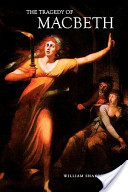 Macbeth
William Shakespeare
Macbeth
William Shakespeare
Macbeth was written by William Shakespeare. It is considered one of his darkest and most powerful tragedies. Set in Scotland, the play dramatizes the corrosive psychological and political effects produced when evil is chosen as a way to fulfil the ambition for power.
-
 The Complete Works of William Shakespeare
William Shakespeare
The Complete Works of William Shakespeare
William Shakespeare
William Shakespeare – 23 April 1616) was an English poet and playwright, widely regarded as the greatest writer in the English language and the world's pre-eminent dramatist. He is often called England's national poet and the "Bard of Avon". His extant works, including some collaborations, consist of about 38 plays, 154 sonnets, two long narrative poems, and a few other verses, the authorship of some of which is uncertain. His plays have been translated into every major living language and are performed more often than those of any other playwright.
-
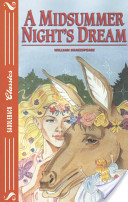 A Midsummer Night's Dream
William Shakespeare
A Midsummer Night's Dream
William Shakespeare
A Midsummer Night's Dream is a play by William Shakespeare. It is believed that it was written between 1590 and 1596. It portrays the events surrounding the marriage of the Duke of Athens, Theseus, and Hippolyta. These include the adventures of four young Athenian lovers and a group of six amateur actors, who are controlled and manipulated by the fairies who inhabit the forest in which most of the play is set. The play, which is categorized as a comedy, is one of Shakespeare's most popular works for the stage and is widely performed across the world.
-
 The Tale of Peter Rabbit
Beatrix Potter
The Tale of Peter Rabbit
Beatrix Potter
The Tale of Peter Rabbit is a British children's book written and illustrated by Beatrix Potter that follows mischievous and disobedient young Peter Rabbit as he is chased about the garden of Mr. McGregor. He escapes and returns home to his mother who puts him to bed after dosing him with camomile tea. The tale was written for five-year-old Noel Moore, son of Potter's former governess Annie Carter Moore, in 1893. It was revised and privately printed by Potter in 1901 after several publishers' rejections but was printed in a trade edition by Frederick Warne & Co. in 1902. The book was a success, and multiple reprints were issued in the years immediately following its debut. It has been translated into 36 languages and with 45 million copies sold it is one of the best-selling books of all time.
-
 The Adventures of Tom Sawyer
Mark Twain
The Adventures of Tom Sawyer
Mark Twain
The Adventures of Tom Sawyer by Mark Twain is an 1876 novel about a young boy growing up along the Mississippi River. The story is set in the fictional town of St. Petersburg, inspired by Hannibal, Missouri, where Twain lived.
-
 Siddhartha
Hermann Hesse
Siddhartha
Hermann Hesse
Siddhartha is a novel by Hermann Hesse that deals with the spiritual journey of self-discovery of a man named Siddhartha during the time of the Gautama Buddha. The book, Hesse's ninth novel , was written in German, in a simple, lyrical style. It was published in the U.S. in 1951 and became influential during the 1960s. Hesse dedicated Siddhartha to his wife Ninon and supposedly afterwards to Romain Rolland and Wilhelm Gundert.
-
 Twas the Night before Christmas
Clement Clarke Moore
Twas the Night before Christmas
Clement Clarke Moore
"A Visit from St. Nicholas", also known as "The Night Before Christmas" and "'Twas the Night Before Christmas" from its first line, is a poem first published anonymously in 1823 and later attributed to Clement Clarke Moore, who acknowledged authorship. An argument has been made that it was actually written by Henry Livingston, Jr., a claim that has been hotly disputed.
-
 A Tale of Two Cities
Charles Dickens
A Tale of Two Cities
Charles Dickens
A Tale of Two Cities is a novel by Charles Dickens, set in London and Paris before and during the French Revolution. With well over 200 million copies sold, it ranks among the most famous works in the history of fictional literature.
-
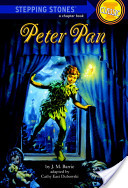 Peter and Wendy
J. M. Barrie
Peter and Wendy
J. M. Barrie
Peter Pan; or, the Boy Who Wouldn't Grow Up or Peter and Wendy is J. M. Barrie's most famous work, in the form of a 1904 play and a 1911 novel, respectively. Both versions tell the story of Peter Pan, a mischievous little boy who can fly, and his adventures on the island of Neverland with Wendy Darling and her brothers, the fairy Tinker Bell, the Lost Boys, the Indian princess Tiger Lily, and the pirate Captain Hook. The play and novel were inspired by Barrie's friendship with the Llewelyn Davies family. Barrie continued to revise the play for years after its debut; the novel reflects one version of the story.
-
 A Study in Scarlet
Arthur Conan Doyle
A Study in Scarlet
Arthur Conan Doyle
A Study in Scarlet is a detective mystery novel written by Sir Arthur Conan Doyle, introducing his new characters, "consulting detective" Sherlock Holmes and his friend and chronicler Dr John Watson, who later became two of the most famous literary characters in detective fiction.
-
 The Three Musketeers
Alexandre Dumas
The Three Musketeers
Alexandre Dumas
The Three Musketeers is a novel by Alexandre Dumas, first serialized in March–July 1844. Set in the 17th century, it recounts the adventures of a young man named d'Artagnan after he leaves home to travel to Paris, to join the Musketeers of the Guard. D'Artagnan is not one of the musketeers of the title; those are his friends Athos, Porthos and Aramis, inseparable friends who live by the motto "all for one, one for all" , a motto which is first put forth by d'Artagnan.
-
 Frankenstein
Mary Wollstonecraft Shelley
Frankenstein
Mary Wollstonecraft Shelley
Frankenstein; or, The Modern Prometheus is a novel written by Mary Shelley about eccentric scientist Victor Frankenstein, who creates a grotesque creature in an unorthodox scientific experiment. Shelley started writing the story when she was nineteen, and the novel was published when she was twenty-one. The first edition was published anonymously in London in 1818. Shelley's name appears on the second edition, published in France in 1823.
-
 War and Peace
Leo Tolstoy
War and Peace
Leo Tolstoy
War and Peace is a novel by the Russian author Leo Tolstoy, first published in 1869. The work is epic in scale and is regarded as one of the most important works of world literature. It is considered Tolstoy's finest literary achievement, along with his other major prose work Anna Karenina .
-
 The Wonderful Wizard of Oz
L. Frank Baum
The Wonderful Wizard of Oz
L. Frank Baum
The Wonderful Wizard of Oz is a children's novel written by L. Frank Baum and illustrated by W. W. Denslow. Originally published by the George M. Hill Company in Chicago on May 17, 1900, it has since been reprinted numerous times, most often under the name The Wizard of Oz, which is the name of both the popular 1902 Broadway musical and the well-known 1939 film adaptation.
-
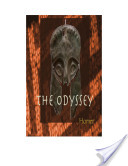 The Odyssey
Homer
The Odyssey
Homer
The Odyssey is one of two major ancient Greek epic poems attributed to Homer. It is, in part, a sequel to the Iliad, the other work ascribed to Homer. The poem is fundamental to the modern Western canon, and is the second oldest extant work of Western literature, the Iliad being the oldest. It is believed to have been composed near the end of the 8th century BC, somewhere in Ionia, the Greek coastal region of Anatolia.
-
 The Memoirs of Sherlock Holmes
Arthur Conan Doyle
The Memoirs of Sherlock Holmes
Arthur Conan Doyle
The Memoirs of Sherlock Holmes is a collection of Sherlock Holmes stories, originally published in 1894, by Arthur Conan Doyle.
-
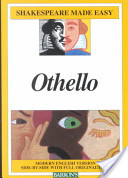 Othello
William Shakespeare
Othello
William Shakespeare
The Tragedy of Othello, the Moor of Venice is a tragedy by William Shakespeare, believed to have been written in approximately 1603, and based on the Italian short story Un Capitano Moro by Cinthio, a disciple of Boccaccio, first published in 1565. The work revolves around four central characters: Othello, a Moorish general in the Venetian army; his new wife, Desdemona; his lieutenant, Cassio; and his trusted ensign, Iago. Because of its varied and current themes of racism, love, jealousy and betrayal, Othello is still often performed in professional and community theatres alike and has been the basis for numerous operatic, film and literary adaptations.
-
 Shakespeare's Sonnets
William Shakespeare
Shakespeare's Sonnets
William Shakespeare
Shakespeare's sonnets are a collection of 154 sonnets, dealing with themes such as the passage of time, love, beauty and mortality, first published in a 1609 quarto entitled SHAKE-SPEARES SONNETS.: Never before imprinted. . The quarto ends with "A Lover's Complaint", a narrative poem of 47 seven-line stanzas written in rhyme royal.
-
 Poems by Emily Dickinson, Three Series, Complete
Emily Dickinson
Poems by Emily Dickinson, Three Series, Complete
Emily Dickinson
A complete collection of Emily Dickinson's work offers poetry lovers a full view of her interior life and literary genius
-
 The Hound of the Baskervilles
Arthur Conan Doyle
The Hound of the Baskervilles
Arthur Conan Doyle
The Hound of the Baskervilles is the third of the four crime novels written by Sir Arthur Conan Doyle featuring the detective Sherlock Holmes. Originally serialised in The Strand Magazine from August 1901 to April 1902, it is set largely on Dartmoor in Devon in England's West Country and tells the story of an attempted murder inspired by the legend of a fearsome, diabolical hound of supernatural origin. Sherlock Holmes and his companion Doctor Watson investigate the case. This was the first appearance of Holmes since his intended death in "The Final Problem", and the success of The Hound of the Baskervilles led to the character's eventual revival.
-
 Black Beauty
Anna Sewell
Black Beauty
Anna Sewell
Black Beauty is an 1877 novel by English author Anna Sewell. It was composed in the last years of her life, during which she remained in her house as an invalid. The novel became an immediate best-seller, with Sewell dying just five months after its publication, but long enough to see her only novel become a success. With fifty million copies sold, Black Beauty is one of the best-selling books of all time.
-
 Notes from the Underground
Fyodor Dostoyevsky
Notes from the Underground
Fyodor Dostoyevsky
Notes from Underground is an 1864 novella by Fyodor Dostoyevsky. Notes is considered by many to be the first existentialist novel. It presents itself as an excerpt from the rambling memoirs of a bitter, isolated, unnamed narrator who is a retired civil servant living in St. Petersburg.
-
 Heidi
Johanna Spyri
Heidi
Johanna Spyri
Heidi is a Swiss work of fiction, originally published in two parts as Heidi's years of learning and travel and Heidi makes use of what she has learned. It is a novel about the events in the life of a young girl in her grandfather's care, in the Swiss Alps. It was written as a book "for children and those who love children" in 1880 by Swiss author Johanna Spyri.
-
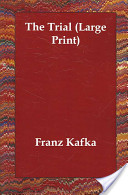 The Trial
Franz Kafka
The Trial
Franz Kafka
The Trial is a novel written by Franz Kafka in 1914 and 1915 but not published until 1925. One of Kafka's best-known works, it tells the story of a man arrested and prosecuted by a remote, inaccessible authority, with the nature of his crime revealed to neither him nor the reader.
-
 The Idiot
Fyodor Dostoyevsky
The Idiot
Fyodor Dostoyevsky
The Idiot is a novel written by the 19th-century Russian author Fyodor Dostoyevsky. It was first published serially in The Russian Messenger between 1868 and 1869. The Idiot is ranked beside some of Dostoyevsky's other works as one of the most brilliant literary achievements of the "Golden Age" of Russian literature.
-
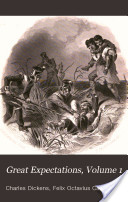 Great Expectations
Charles Dickens
Great Expectations
Charles Dickens
Charles John Huffam Dickens was an English writer and social critic. He created some of the world's most memorable fictional characters and is generally regarded as the greatest novelist of the Victorian period. During his life, his works enjoyed unprecedented fame, and by the twentieth century his literary genius was broadly acknowledged by critics and scholars. His novels and short stories continue to be widely popular.
-
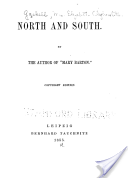 North and South
Elizabeth Cleghorn Gaskell
North and South
Elizabeth Cleghorn Gaskell
Elizabeth Cleghorn Gaskell, née Stevenson , often referred to simply as Mrs Gaskell, was a British novelist and short story writer during the Victorian era. Her novels offer a detailed portrait of the lives of many strata of society, including the very poor, and are of interest to social historians as well as lovers of literature.
-
 The Phantom of the Opera
Gaston Leroux
The Phantom of the Opera
Gaston Leroux
The Phantom of the Opera is a novel by French writer Gaston Leroux. It was first published as a serialisation in Le Gaulois from September 23, 1909 to January 8, 1910. The novel sold very poorly upon publication in book form and was even out of print several times during the 20th century; it is overshadowed by the success of its various stage and film adaptations. The most notable of these are the 1925 film depiction featuring Lon Chaney, Sr and Andrew Lloyd Webber's 1986 musical.
-
 Treasure Island
Robert Louis Stevenson
Treasure Island
Robert Louis Stevenson
Treasure Island is an adventure novel by Scottish author Robert Louis Stevenson, narrating a tale of "buccaneers and buried gold". First published as a book on 23 May 1883, it was originally serialized in the children's magazine Young Folks between 1881 and 1882 under the title Treasure Island or, the mutiny of the Hispaniola with Stevenson adopting the pseudonym Captain George North.
-
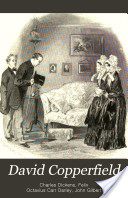 David Copperfield
Charles Dickens
David Copperfield
Charles Dickens
David Copperfield is the common name of the eighth novel by Charles Dickens, first published as a novel in 1850. Its full title is The Personal History, Adventures, Experience and Observation of David Copperfield the Younger of Blunderstone Rookery . Like most of his works, it originally appeared in serial form during the two preceding years. Many elements of the novel follow events in Dickens' own life, and it is probably the most autobiographical of his novels. In the preface to the 1867 edition, Dickens wrote, "...like many fond parents, I have in my heart of hearts a favourite child. And his name is David Copperfield."
-
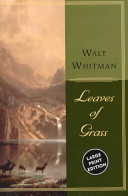 Leaves of Grass
Walt Whitman
Leaves of Grass
Walt Whitman
Leaves of Grass is a poetry collection by the American poet Walt Whitman . Though the first edition was published in 1855, Whitman spent his entire life writing Leaves of Grass, revising it in several editions until his death. Among the poems in the collection are "Song of Myself", "I Sing the Body Electric", "Out of the Cradle Endlessly Rocking", and in later editions, Whitman's elegy to the assassinated President Abraham Lincoln, "When Lilacs Last in the Dooryard Bloom'd".
-
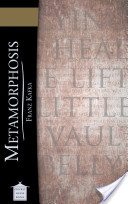 Metamorphosis
Franz Kafka
Metamorphosis
Franz Kafka
The Metamorphosis is a novella by Franz Kafka, first published in 1915. It has been cited as one of the seminal works of fiction of the 20th century and is studied in colleges and universities across the Western world. The story begins with a traveling salesman, Gregor Samsa, waking to find himself transformed into a large, monstrous insect-like creature. The cause of Samsa's transformation is never revealed, and Kafka never did give an explanation. The rest of Kafka's novella deals with Gregor's attempts to adjust to his new condition as he deals with being burdensome to his parents and sister, who are repulsed by the horrible, verminous creature Gregor has become.
-
 Aesop's Fables; a new translation
Aesop
Aesop's Fables; a new translation
Aesop
Aesop's Fables or the Aesopica is a collection of fables credited to Aesop, a slave and story-teller believed to have lived in ancient Greece between 620 and 560 BCE. Of diverse origins, the stories associated with Aesop's name have descended to modern times through a number of sources. They continue to be reinterpreted in different verbal registers and in popular as well as artistic mediums.
-
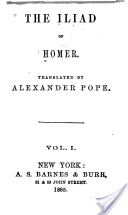 The Iliad
Homer
The Iliad
Homer
The Iliad is an ancient Greek epic poem in dactylic hexameter, traditionally attributed to Homer. Set during the Trojan War, the ten-year siege of the city of Troy by a coalition of Greek states, it tells of the battles and events during the weeks of a quarrel between King Agamemnon and the warrior Achilles.
-
 The Elements of Style
William Strunk
The Elements of Style
William Strunk
The Elements of Style , by William Strunk, Jr. and E. B. White, is a prescriptive American English writing style guide comprising eight "elementary rules of usage", ten "elementary principles of composition", "a few matters of form", a list of forty-nine "words and expressions commonly misused", and a list of fifty-seven "words often misspelled". In 2011, Time magazine listed The Elements of Style as one of the 100 best and most influential books written in English since 1923.
-
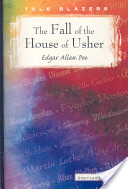 The Fall of the House of Usher
Edgar Allan Poe
The Fall of the House of Usher
Edgar Allan Poe
"The Fall of the House of Usher" is a short story by Edgar Allan Poe.
-
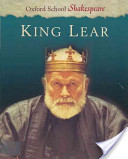 King Lear
William Shakespeare
King Lear
William Shakespeare
King Lear is a tragedy by William Shakespeare. The title character descends into madness after disposing of his estate between two of his three daughters based on their flattery, bringing tragic consequences for all. The play is based on the legend of Leir of Britain, a mythological pre-Roman Celtic king. It has been widely adapted for the stage and motion pictures, and the role of Lear has been coveted and played by many of the world's most accomplished actors.
-
 The Wind in the Willows
Kenneth Grahame
The Wind in the Willows
Kenneth Grahame
The Wind in the Willows is a classic of children's literature by Kenneth Grahame, first published in 1908. Alternately slow moving and fast paced, it focuses on four anthropomorphised animal characters in a pastoral version of England. The novel is notable for its mixture of mysticism, adventure, morality, and camaraderie and celebrated for its evocation of the nature of the Thames valley.
-
 Mansfield Park
Jane Austen
Mansfield Park
Jane Austen
Mansfield Park is a novel by Jane Austen, written at Chawton Cottage between February 1811 and 1813. It was published in May 1814 by Thomas Egerton, who published Jane Austen's two earlier novels, Sense and Sensibility and Pride and Prejudice. When the novel reached a second edition in 1816, its publication was taken over by John Murray, who also published its successor, Emma.
-
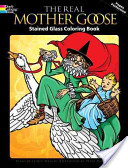 The Real Mother Goose
Blanche Fisher Wright
The Real Mother Goose
Blanche Fisher Wright
Blanche Fisher Wright is children's books illustrator, active in the 1910s. She is best known as being the illustrator of The Real Mother Goose, originally published in 1916.
-
 The Hunting of the Snark
Lewis Carroll
The Hunting of the Snark
Lewis Carroll
The poem borrows occasionally from Carroll's short poem "Jabberwocky" in Through the Looking-Glass , but it is a stand-alone work, first published in 1876 by Macmillan. The illustrations were by Henry Holiday.
-
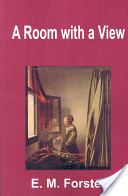 A Room with a View
E. M. Forster
A Room with a View
E. M. Forster
A Room with a View is a 1908 novel by English writer E. M. Forster, about a young woman in the repressed culture of Edwardian era England. Set in Italy and England, the story is both a romance and a critique of English society at the beginning of the 20th century. Merchant-Ivory produced an award-winning film adaptation in 1985.
-
 Oliver Twist
Charles Dickens
Oliver Twist
Charles Dickens
Oliver Twist, subtitled The Parish Boy's Progress, is the second novel by English author Charles Dickens, published by Richard Bentley in 1838. The story is about an orphan, Oliver Twist, who endures a miserable existence in a workhouse and then is placed with an undertaker. He escapes and travels to London where he meets the Artful Dodger, leader of a gang of juvenile pickpockets. Naively unaware of their unlawful activities, Oliver is led to the lair of their elderly criminal trainer Fagin.
-
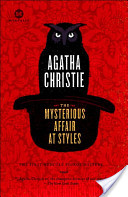 The Mysterious Affair at Styles
Agatha Christie
The Mysterious Affair at Styles
Agatha Christie
The Mysterious Affair at Styles is a detective novel by Agatha Christie. It was written in the middle of World War I, in 1916, and first published by John Lane in the United States in October 1920 and in the United Kingdom by The Bodley Head on 21 January 1921. The U.S. edition retailed at US$2.00 and the UK edition at seven shillings and sixpence .
-
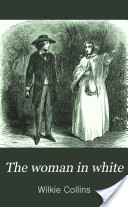 The Woman in White
Wilkie Collins
The Woman in White
Wilkie Collins
The Woman in White is Wilkie Collins' fifth published novel, written in 1859. It is considered to be among the first mystery novels and is widely regarded as one of the first in the genre of "sensation novels".
-
 The Call of the Wild
Jack London
The Call of the Wild
Jack London
The Call of the Wild is a novel by American author Jack London published in 1903. The story is set in the Yukon during the 19th-century Klondike Gold Rush—a period when strong sled dogs were in high demand. The novel's central character is a dog named Buck, a domesticated dog living at a ranch in California as the story opens. Stolen from his home and sold into the brutal existence of an Alaskan sled dog, he reverts to atavistic traits. Buck is forced to adjust to, and survive, cruel treatments, fight to dominate other dogs in a harsh climate. Eventually he sheds the veneer of civilization, relying on primordial instincts through lessons he learns, to emerge as a leader in the wild.
-
 Northanger Abbey
Jane Austen
Northanger Abbey
Jane Austen
Northanger Abbey /ˈnɔrθˌæŋɡər/ was the first of Jane Austen's novels to be completed for publication, though she had previously made a start on Sense and Sensibility and Pride and Prejudice. According to Cassandra Austen's Memorandum, Susan was written circa 1798–99. It was revised by Austen for the press in 1803, and sold in the same year for £10 to a London bookseller, Crosby & Co., who decided against publishing. In the spring of 1816, the bookseller was content to sell it back to the novelist's brother, Henry Austen, for the exact sum—£10—that he had paid for it at the beginning, not knowing that the writer was by then the author of four popular novels.
-
 The Gift of the Magi
O. Henry
The Gift of the Magi
O. Henry
"The Gift of the Magi" is a short story written by O. Henry , about a young married couple and how they deal with the challenge of buying secret Christmas gifts for each other with very little money. As a sentimental story with a moral lesson about gift-giving, it has been a popular one for adaptation, especially for presentation at Christmas time. The plot and its "twist ending" are well-known, and the ending is generally considered an example of cosmic irony. It was allegedly written at Pete's Tavern on Irving Place in New York City.
-
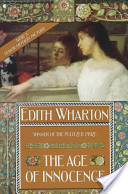 The Age of Innocence
Edith Wharton
The Age of Innocence
Edith Wharton
The Age of Innocence is Edith Wharton's 12th novel, initially serialized in four parts in the Pictorial Review magazine in 1920, and later released by D. Appleton and Company as a book in New York and in London. It won the 1921 Pulitzer Prize for Fiction, making it the first novel written by a woman to win the Pulitzer Prize for Fiction, and making Wharton the first woman to win a Pulitzer Prize for Fiction. The story is set in upper-class New York City in the 1870s.
-
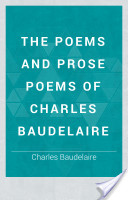 The Poems and Prose Poems of Charles Baudelaire
Charles Baudelaire
The Poems and Prose Poems of Charles Baudelaire
Charles Baudelaire
Charles Pierre Baudelaire was a French poet who also produced notable work as an essayist, art critic, and pioneering translator of Edgar Allan Poe. His most famous work, Les Fleurs du mal , expresses the changing nature of beauty in modern, industrializing Paris during the 19th century. Baudelaire's highly original style of prose-poetry influenced a whole generation of poets including Paul Verlaine, Arthur Rimbaud and Stéphane Mallarmé among many others. He is credited with coining the term "modernity" to designate the fleeting, ephemeral experience of life in an urban metropolis, and the responsibility art has to capture that experience.
-
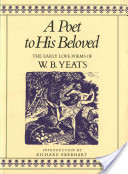 Poems
W. B. Yeats
Poems
W. B. Yeats
William Butler Yeats was an Irish poet and one of the foremost figures of 20th century literature. In 1923 he was awarded the Nobel Prize in Literature as the first Irishman so honoured for what the Nobel Committee described as "inspired poetry, which in a highly artistic form gives expression to the spirit of a whole nation."
-
 Around the World in 80 Days
Jules Verne
Around the World in 80 Days
Jules Verne
Around the World in Eighty Days is a classic adventure novel by the French writer Jules Verne, published in 1873. In the story, Phileas Fogg of London and his newly employed French valet Passepartout attempt to circumnavigate the world in 80 days on a £20,000 wager set by his friends at the Reform Club. It is one of Verne's most acclaimed works.
-
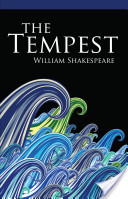 The Tempest
William Shakespeare
The Tempest
William Shakespeare
The Tempest is a play by William Shakespeare, believed to have been written in 1610–11, and thought by many critics to be the last play that Shakespeare wrote alone. It is set on a remote island, where Prospero, the rightful Duke of Milan, plots to restore his daughter Miranda to her rightful place using illusion and skillful manipulation. He conjures up a storm, the eponymous tempest, to lure his usurping brother Antonio and the complicit King Alonso of Naples to the island. There, his machinations bring about the revelation of Antonio's lowly nature, the redemption of the King, and the marriage of Miranda to Alonso's son, Ferdinand.
-
 Middlemarch
George Eliot
Middlemarch
George Eliot
Middlemarch: A Study of Provincial Life is a novel by George Eliot, the pen name of Mary Anne Evans, later Marian Evans. It is her seventh novel, begun in 1869 and then put aside during the final illness of Thornton Lewes, the son of her companion George Henry Lewes. During the following year Eliot resumed work, fusing together several stories into a coherent whole, and during 1871–72 the novel appeared in serial form. The first one-volume edition was published in 1874, and attracted large sales.
-
 Anne of Green Gables
L. M. Montgomery
Anne of Green Gables
L. M. Montgomery
Anne of Green Gables is a bestselling 1908 novel by Canadian author Lucy Maud Montgomery. Written as fiction for readers of all ages, the literary classic has been considered a children's novel since the mid-twentieth century. It recounts the adventures of Anne Shirley, a young orphan girl mistakenly sent to Matthew and Marilla Cuthbert, a middle-aged brother and sister who have a farm on Prince Edward Island and who had intended to adopt a boy to help them. The novel recounts how Anne makes her way with the Cuthberts, in school and within the town.
-
 The Strange Case of Dr. Jekyll and Mr. Hyde
Robert Louis Stevenson
The Strange Case of Dr. Jekyll and Mr. Hyde
Robert Louis Stevenson
Strange Case of Dr Jekyll and Mr Hyde is the original title of a novella written by the Scottish author Robert Louis Stevenson that was first published in 1886. The work is commonly known today as The Strange Case of Dr. Jekyll and Mr. Hyde, Dr. Jekyll and Mr. Hyde, or simply Jekyll & Hyde. It is about a London lawyer named Gabriel John Utterson who investigates strange occurrences between his old friend, Dr. Henry Jekyll, and the evil Edward Hyde.
-
 Bleak House
Charles Dickens
Bleak House
Charles Dickens
Bleak House is a novel by Charles Dickens, published in 20 monthly instalments between March 1852 and September 1853. It is held to be one of Dickens' finest novels, containing one of the most vast, complex and engaging arrays of minor characters and sub-plots in his entire canon. The story is told partly by the novel's heroine, Esther Summerson, and partly by a mostly omniscient narrator. Memorable characters include the menacing lawyer Tulkinghorn, the friendly but depressive John Jarndyce, and the childish and disingenuous Harold Skimpole, as well as the likeable but imprudent Richard Carstone.
-
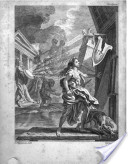 Don Quixote
Miguel de Cervantes Saavedra
Don Quixote
Miguel de Cervantes Saavedra
Don Quixote ), fully titled The Ingenious Gentleman Don Quixote of La Mancha , is a Spanish novel by Miguel de Cervantes Saavedra. It follows the adventures of Alonso Quijano, an hidalgo who reads so many chivalric novels that he decides to set out to revive chivalry, under the name Don Quixote. He recruits a simple farmer, Sancho Panza, as his squire, who often employs a unique, earthly wit in dealing with Don Quixote's rhetorical orations on antiquated knighthood. Don Quixote is met by the world as it is, initiating such themes as intertextuality, realism, metatheatre, and literary representation.
-
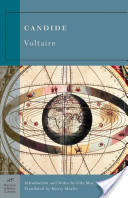 Candide
Voltaire
Candide
Voltaire
Candide, ou l'Optimisme is a French satire first published in 1759 by Voltaire, a philosopher of the Age of Enlightenment. The novella has been widely translated, with English versions titled Candide: or, All for the Best ; Candide: or, The Optimist ; and Candide: or, Optimism . It begins with a young man, Candide, who is living a sheltered life in an Edenic paradise and being indoctrinated with Leibnizian optimism by his mentor, Pangloss. The work describes the abrupt cessation of this lifestyle, followed by Candide's slow, painful disillusionment as he witnesses and experiences great hardships in the world. Voltaire concludes with Candide, if not rejecting optimism outright, advocating a deeply practical precept, "we must cultivate our garden", in lieu of the Leibnizian mantra of Pangloss, "all is for the best in the best of all possible worlds".
-
 The Yellow Wallpaper
Charlotte Perkins Gilman
The Yellow Wallpaper
Charlotte Perkins Gilman
"The Yellow Wallpaper" is a 6,000-word short story by the American writer Charlotte Perkins Gilman, first published in January 1892 in The New England Magazine. It is regarded as an important early work of American feminist literature, illustrating attitudes in the 19th century toward women's physical and mental health.
-
 The Return of Sherlock Holmes
Arthur Conan Doyle
The Return of Sherlock Holmes
Arthur Conan Doyle
The Return of Sherlock Holmes is a collection of 13 Sherlock Holmes stories, originally published in 1903-1904, by Arthur Conan Doyle.
-
 Uncle Tom's Cabin
Harriet Beecher Stowe
Uncle Tom's Cabin
Harriet Beecher Stowe
Uncle Tom's Cabin; or, Life Among the Lowly is an anti-slavery novel by American author Harriet Beecher Stowe. Published in 1852, the novel "helped lay the groundwork for the Civil War", according to Will Kaufman.
-
 The Cask of Amontillado
Edgar Allan Poe
The Cask of Amontillado
Edgar Allan Poe
"The Cask of Amontillado" is a short story by Edgar Allan Poe, first published in the November 1846 issue of Godey's Lady's Book.
-
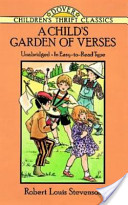 A Child's Garden of Verses
Robert Louis Stevenson
A Child's Garden of Verses
Robert Louis Stevenson
A Child's Garden of Verses is a collection of poetry for children by the Scottish author Robert Louis Stevenson. The collection first appeared in 1885 under the title Penny Whistles, but has been reprinted many times, often in illustrated versions. It contains about 65 poems including the cherished classics "Foreign Children," "The Lamplighter," "The Land of Counterpane," "Bed in Summer," "My Shadow" and "The Swing."
-
 The House of Mirth
Edith Wharton
The House of Mirth
Edith Wharton
The House of Mirth is the fourth novel by Edith Wharton. First published in 1905, the novel is Wharton's first important work of fiction. It sold 140,000 copies between October and the end of December, adding to Wharton's existing fortune. The House of Mirth was written while Edith Wharton lived at The Mount, her home in Lenox, Massachusetts.
-
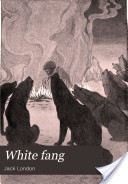 White Fang
Jack London
White Fang
Jack London
White Fang is the titular character and a novel by American author Jack London. First serialized in Outing magazine, it was published in 1906. The story takes place in Yukon Territory, Canada, during the Klondike Gold Rush at the end of the 19th-century, and details a wild wolfdog's journey to domestication. White Fang is a companion novel to London's best-known work, The Call of the Wild, which is about a kidnapped, domesticated dog embracing his wild ancestry to survive and thrive in the wild.
-
 The Raven
Edgar Allan Poe
The Raven
Edgar Allan Poe
"The Raven" is a narrative poem by American writer Edgar Allan Poe. First published in January 1845, the poem is often noted for its musicality, stylized language, and supernatural atmosphere. It tells of a talking raven's mysterious visit to a distraught lover, tracing the man's slow fall into madness. The lover, often identified as being a student, is lamenting the loss of his love, Lenore. Sitting on a bust of Pallas, the raven seems to further instigate his distress with its constant repetition of the word "Nevermore". The poem makes use of a number of folk and classical references.
-
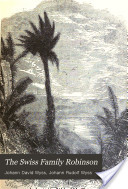 The Swiss Family Robinson; or Adventures in a Desert Island
Johann David Wyss
The Swiss Family Robinson; or Adventures in a Desert Island
Johann David Wyss
Johann David Wyss German pronunciation: is best remembered for his book The Swiss Family Robinson . It is said that he was inspired by Daniel Defoe's Robinson Crusoe, but wanted to write a story from which his own children would learn, as the father in the story taught important lessons to his children. The Swiss Family Robinson was first published in 1812 and translated into English two years later. It has since become one of the most popular books of all time. The book was edited by his son, Johann Rudolf Wyss, a scholar who wrote the Swiss national anthem. Another son, Johann Emmanuel Wyss, illustrated the book. Unlike his son, Johann David Wyss lived up to the age of 74, dying in 1818, four years after he wrote "The Swiss Family Robinson".
-
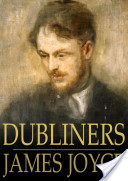 Dubliners
James Joyce
Dubliners
James Joyce
Dubliners is a collection of 15 short stories by James Joyce, first published in 1914. They form a naturalistic depiction of Irish middle class life in and around Dublin in the early years of the 20th century.
-
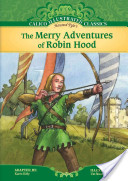 The Merry Adventures of Robin Hood
Howard Pyle
The Merry Adventures of Robin Hood
Howard Pyle
The Merry Adventures of Robin Hood of Great Renown in Nottinghamshire is an 1883 novel by the American illustrator and writer Howard Pyle. Consisting of a series of episodes in the story of the English outlaw Robin Hood and his band of Merry Men, the novel compiles traditional material into a coherent narrative in a colorful, invented "old English" idiom that preserves some flavor of the ballads, and adapts it for children. The novel is notable for taking the subject of Robin Hood, which had been increasingly popular through the 19th century, in a new direction that influenced later writers, artists, and filmmakers through the next century.
-
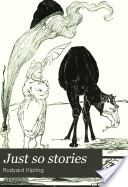 Just So Stories
Rudyard Kipling
Just So Stories
Rudyard Kipling
The Just So Stories for Little Children are a collection written by the British author Rudyard Kipling. Highly fantasised origin stories, especially for differences among animals, they are among Kipling's best known works.
-
 Tess of the d'Urbervilles, a Pure Woman
Thomas Hardy
Tess of the d'Urbervilles, a Pure Woman
Thomas Hardy
Tess of the d'Urbervilles: A Pure Woman Faithfully Presented, also known as Tess of the d'Urbervilles: A Pure Woman, Tess of the d'Urbervilles or just Tess, is a novel by Thomas Hardy, first published in 1891. It initially appeared in a censored and serialised version, published by the British illustrated newspaper, The Graphic. Though now considered an important work of English literature, the book received mixed reviews when it first appeared, in part because it challenged the sexual mores of Hardy's day. The original manuscript is on display at the British Library, showing that it was originally titled "Daughter of the d'Urbervilles." In 2003, the novel was listed at number 26 on the BBC's survey The Big Read.
-
 Of Human Bondage
W. Somerset Maugham
Of Human Bondage
W. Somerset Maugham
Of Human Bondage is a novel by W. Somerset Maugham. It is generally agreed to be his masterpiece and to be strongly autobiographical in nature, although Maugham stated, "This is a novel, not an autobiography, though much in it is autobiographical, more is pure invention." Maugham, who had originally planned to call his novel Beauty from Ashes, finally settled on a title taken from a section of Spinoza's Ethics. The Modern Library ranked Of Human Bondage No. 66 on its list of the 100 best English-language novels of the 20th century.
-
 Pygmalion
Bernard Shaw
Pygmalion
Bernard Shaw
Pygmalion is a play by George Bernard Shaw, named after a Greek mythological character. It was first presented on stage to the public in 1912.
-
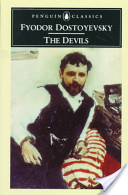 The Possessed (The Devils)
Fyodor Dostoyevsky
The Possessed (The Devils)
Fyodor Dostoyevsky
In The Devils Dostoyevsky created a chilling and prophetic story of revolutionaries and nihilists plotting the overthrow of the Russian government and the downfall of the Russian church. It focuses on the complex and tormented character of Stavrogin, a desperate man whose loss of faith makes him dangerous. Believing he is beyond guilt and remorse, he commits terrible crimes, infects others with ideas he does not believe in and accepts love he does not deserve. Yet Stavrogin is only one of a small band of rebels whose hunger for a more democratic, Western system threatens the fabric of Russian society, and The Devils is a brilliant psychological analysis of a group of people possessed by a destructive passion for revolution.
-
 The Jungle Book
Rudyard Kipling
The Jungle Book
Rudyard Kipling
The Jungle Book is a collection of stories by English Nobel laureate Rudyard Kipling. The stories were first published in magazines in 1893–94. The original publications contain illustrations, some by Rudyard's father, John Lockwood Kipling. Kipling was born in India and spent the first six years of his childhood there. After about ten years in England, he went back to India and worked there for about six-and-a-half years. These stories were written when Kipling lived in Vermont. There is evidence that it was written for his daughter Josephine, who died in 1899 aged six, after a rare first edition of the book with a poignant handwritten note by the author to his young daughter was discovered at the National Trust's Wimpole Hall in Cambridgeshire in 2010.